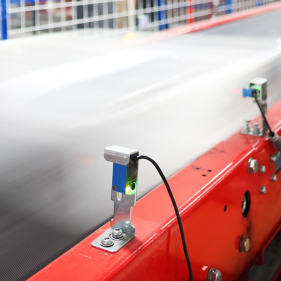The challenge is applying the right price and the right promotion to the right product. Some strategies work better for some products than for others, or under different circumstances. To fully understand what levers work on products or don’t, you need to recognize their true gestalt, which is how customers perceive products.
Sometimes, it’s simple. Turns out that color can be very important for some categories. For example, smart wristbands in black will always work better than more colorful and otherwise identical models. Other times, consumer preferences have a more complex basis, and it is the combination of several features that make up for a winning product. Single-bottle, premium-brand drinks attract young professionals, whereas 8-packs of cheaper brands attract large families. And in other cases, typically in fashion & apparel, consumer attraction is even more subtle and cannot be simply or logically described, except perhaps by “expert” trend setters.
To fully understand what levers work on products or don’t, you need to recognize their true gestalt, which is how customers perceive products
Consumers don’t spend a lot of time thinking this through. By glancing at the image of a product on the internet, reading through its description and skimming the specifications, a consumer makes a determination of the value of a product, and whether the price and promotion make it a good deal. How can we use machines to replicate this process so that retailers can better understand consumers and offer the right price/promotion?
The limitations of fixed data fields
Retailers have for years relied on fixed data fields—such as bottle vs. can, volume, added sugar or not—that they fill in manually whenever listing a new product. This information can be used for AI-driven pricing or promotional planning. The machine-learning algorithm learns from observed sales history, and, by matching against product attributes, is able to generalize and better predict the retail outcome for both old and newly listed products.
That’s in theory. From our experience across most of our clients, retailers are too busy to fill out such databases, especially for “long-tail” products. This is where AI can play a decisive role. It can fill out the databases, by assigning attributes from the products for which the information was correctly filled in. These algorithms typically rely on Natural Language Processing techniques when learning from the product descriptions, or Computer Vision when learning from the product images.
However, even if all the typical fixed-data fields are filled in, either by the retailers or the algorithms, these fields do not do a very good job of describing product subtleties—like color, shape, allure, scent, logo, placement, and so on. Even though the information should be included in the product appearance or description, they are difficult to extract and fit into a set of static fields.
AI will explain why a certain product might be a new trendsetter next year—essentially replacing human judgement to make a qualitative assessment based on its own learnings about how people perceive products
“Deep learning” to define critical product attributes
“Deep learning”—another application of AI—can provide nuanced insights to fully understand a product, its true gestalt. A deep-learning algorithm is a stack of many (often hundreds) of neurons. The external layer classifies the category of a product (soda, dress, watch), whereas the internal layers represent the product image or description, capturing implicit information such as color, shape, style, design, or flavor. Except for basic commodities, this nuanced information is much more important to consumers than such basic product attributes such as, say, size and volume. Thus, applied to a specific machine-learning pricing algorithm, this new information, which goes far beyond standard fixed-field data, can help predict the likely sales outcome at different price levels.
Tomorrow, AI will help make classic business decisions—how much to produce, where to distribute, how to price, how to promote, whom to target, and so on. This next frontier for deep-learning moves from individual algorithms trained to perform a specific task on a single dataset—to multi-purpose algorithms answering multiple challenges at once. AI will explain why a certain product might be a new trendsetter next year—essentially replacing human judgement to make a qualitative assessment based on its own learnings about how people perceive products. And AI will be more effective in doing so than any human.






